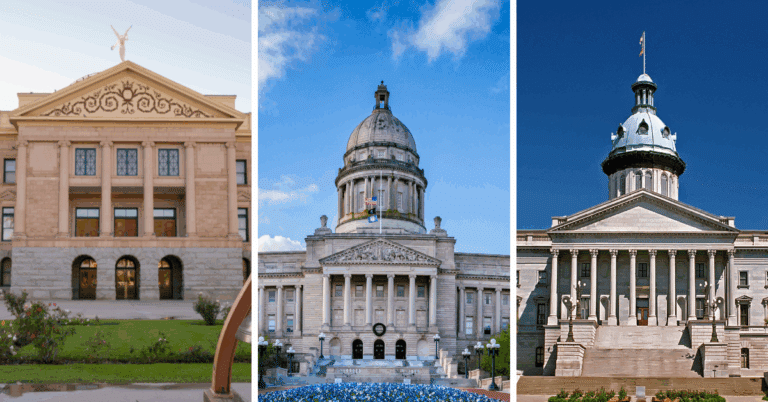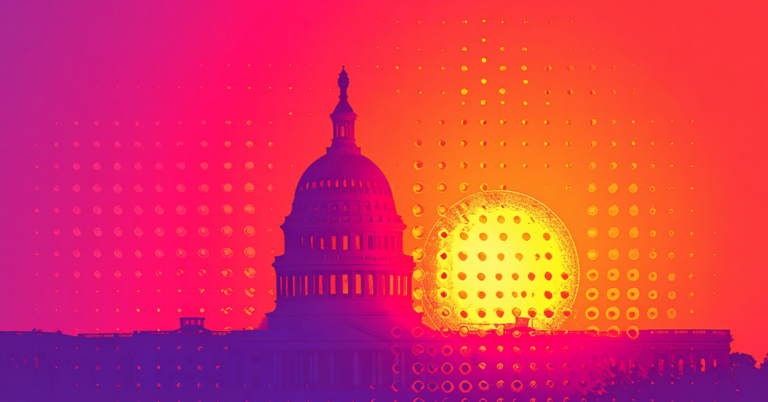This year, we heard a lot from states about the importance of preparing students for postsecondary and career readiness. This nationwide concern was front and center during the 2025 legislative session, as trends in the legislative space have been clear that education systems need to provide students with the academic and workforce skills to ensure they’re successful after high school.

According to the National Conference of State Legislatures, all 50 states and the District of Columbia held legislative sessions in 2025. At KnowledgeWorks, we track legislation across the country to identify introduced and enacted legislation that supports student-centered learning and improves student outcomes through flexibility and innovation. In our fourth year of legislative tracking, we’ve started making updates to our legislative tracking system to reflect the most recent iteration of the State Policy Framework for Personalized Learning. Our updated policy framework reflects conversations and work with state partners and peer organizations, as well as trends and evergreen policies we’ve observed through our tracking system.
This year, we identified 43 enacted bills across 26 states that support student-centered learning. The bills largely focused on how to innovate education, through methods like high school transformation, to improve student outcomes. To accomplish this, we’re seeing states encourage the use of personalized and competency-based strategies. Trending topics this year were:
- High school transformation
- Academic acceleration through personalization
- Career readiness
- Sustainable funding
1. High school transformation
As states consider how best to prepare students for career and postsecondary readiness, high school is a natural place to focus attention. One strategy to tackle this is through high school transformation. High school transformation typically includes re-imagining the high school model through educational approaches like personalized and competency-based learning.
In California, the state is investing in its high schools to help them transform their environments. A.B. 121 establishes the Secondary School Redesign Pilot Program. The purpose of the program is to, among other things, “provide personalized supports that enable pupil success and equitable outcomes. Innovative uses of technology and experiential learning opportunities are encouraged.” It includes $10 million to the California Collaborative for Educational Excellence to administer the program and partner with any peer organizations or other local education agencies to, among other things, “manage a network of grantees to support peer learning and documentation of practices.” The bill also establishes, and funds, the Student Support and Professional Development Discretionary Block Grant which includes expanding career and dual enrollment efforts.
Washington’s Governor signed S.B. 5189 into law (which we highlighted in our previous legislative session analysis), making it the first state to pass a state-level mastery-based transcript recommendation. The creation of a state-level mastery-based transcript gives districts a valuable tool that they can use to ensure that learners’ high school experiences can be more personalized and allow them to more deeply display their high school experience and the skills they’ve developed.
2. Academic acceleration through skill building
In preparing learners for life after K-12 education, it’s crucial that they have a firm grasp of key academic concepts. While states are emphasizing the importance of these skills, many are leveraging personalized and competency-based learning strategies to help learners reach their goals and acquire academic content knowledge.
Florida S.B. 2510 establishes a funding formula to provide additional supports for students taking courses to prepare them for postsecondary goals. The supports, according to the bill, are intended to “assist school districts in providing academic acceleration options, career-themed courses, and courses that lead to digital tool certificates and industry certifications for prekindergarten through grade 12.” Applicable programs include dual enrollment, Advanced Placement, International Baccalaureate, as well as state-specific certifications. Access and funding for a broad range of programs help ensure students can personalize their learning experiences. The additional funding can be used to financially support students through these programs, including covering the cost of examination fees, as well as teacher professional learning and providing teacher bonuses to improve teaching practices and award teachers who are helping students achieve successful learning outcomes. $596,771,896 is appropriated for this program in S.B. 2500.
North Dakota passed S.B. 2213, which creates a pilot program that provides screening and personalized interventions to students in grades four through eight. According to the bill, “The pilot program must include individualized mathematics learning tools that use a skill-level screener and skill-level assessments to identify student needs, measure progress across multiple grades, and report on that progress to evaluate and improve student learning and performance outcomes.” Individual learning tools must be aligned with “mathematics content standards, skills progressions, and competencies.” The use of assessments in combination with personalized interventions will help students meet their learning outcomes and help ensure competency in early grade mathematics. The bill also allocates $300 million to support this pilot program. This bill is one example of how states are leveraging personalized approaches to teaching and learning to help students obtain academic outcomes.
3. Career readiness
In addition to ensuring students meet academic learning targets, states also want to ensure they obtain career and workforce experiences that can help them explore options and prepare for their futures.
Louisiana’s H.B. 533 will support the expansion of apprenticeships and work-based learning opportunities in the state. The bill creates an income tax credit for the employment of each eligible apprentice, intern and youth worker. The legislation notes that the change is in part because “apprenticeships and internships are integral components of work-based learning initiatives in Louisiana’s school accountability system.” The legislation also updates the definition of an apprentice to include competency-based program models.
In Texas, S.B. 1 is a large bill that includes a variety of funding allocations to support personalized and competency-based learning, including $30 million for “implementing intensive educational supports to ensure students perform on grade level and graduate ready for college, career, or the military. The grant programs and interventions may include expanding learning options for Pathways in Technology Early College High School (P-TECH).” This large investment demonstrates a commitment from the state to ensure its graduates are college- and career-ready. The bill also includes $1.75 million per biennium for a newly created program, Navigating Excellence Through Targeted Supports Initiative. This is a grant program for schools designated for improvement to “prioritize personalized intervention supports focused on high-quality math and/or reading language arts curriculum and instructional supports, aligned targeted tutoring, and include community and parent engagement efforts.” This aligns with the prioritization of academic outcomes through personalized learning strategies and supports that we’re seeing across states this year!
4. Sustainable funding
And of course, states are considering how best to ensure that funding is available for these types of student-centered learning programs that can help students achieve academic and postsecondary success.
In Montana, H.B. 573 includes a grant program for phase II of their Transformational Learning work. This grant provides funding to “further develop the efforts of the most innovative transformational learning grantees toward district-wide implementation of transformational and proficiency-based learning” and to “use the knowledge gained by phase II grantees to develop recommendations and guidance for other districts interested in innovating in a similar manner.” While this is the second phase of funding, the Transformational Learning Program began in 2020 following the passage of H.B. 351 in 2019. Continued funding for this initiative will help ensure that students receive access to student-centered programs.
Vermont H. 454 instructs the 2026 legislature to, among other things, “enact student-centered updates to fully fund career and technical education within a foundation formula that does not create competition between sending schools and career and technical education programs for available funds nor exceed current spending levels.” This bill makes changes and proposes additional updates to Vermont’s funding system that lead to more opportunities for learners.






